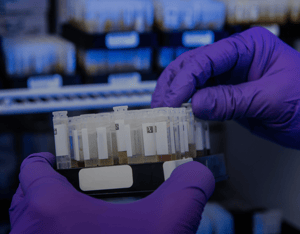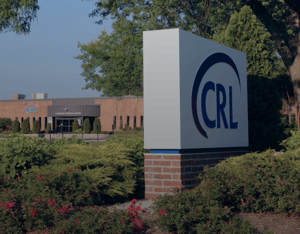Dr. Steven Rigatti, Consulting Medical Director to CRL, comments on alcohol and tobacco usage rates from a pre-pandemic period to a pandemic period. Formal studies and new research from CRL indicate trends that affect life insurers and applicant policies.
Introduction
The 2020 COVID-19 pandemic has had numerous impacts on the overall health of the US population, even beyond the 500,000 deaths which have occurred as of this writing. Widespread shifts of work, school, and social activities from in-person group activities to virtual environments has drastically altered daily life for many people. This has led to a sense of isolation, worry over potential illness, grief from the illness or death of loved ones, and financial stress from job loss, all of which may create conditions where substance use increases. Indeed, formal studies have shown an uptick in self-reported alcohol intake among US residents since the pandemic began. This trend is important for life insurers since positive blood alcohol levels have been shown to correlate with high mortality rates in life insurance applicants, as shown in a prior CRL publication.
This trend [in increased substance abuse] is important for life insurers since positive blood alcohol levels have been shown to correlate with high mortality rates in applicants.
CRL is in a unique position to address the question of increased usage, since many of our clients test blood alcohol in their applicants, and have continued these evaluations throughout the pandemic. Additionally, most of these same applicants were asked about tobacco usage and were tested for nicotine metabolites (cotinine) in their urine. The following study addresses the question of whether rates of alcohol and tobacco use have changed between the pre-pandemic period (January 2019 to March 2020) to the pandemic period (April 2020 to December 2020).
Study Overview: The Population
Data were collected from several client companies who test all or most of their applicants for blood alcohol. Overall, 633,266 samples were tested in the early (pre-pandemic) period, and 293,387 during the late pandemic period; 58% were male, the average age was 45.8, and the median face amount was $400,000.
Alcohol
Over the period of the study, the rate of positive blood alcohol (level >= 10mg/dl) steadily increased (Figure 1). The overall rate increased from 4.2 per thousand in the early period to 4.7 per thousand in the late period, a statistically significant difference (p value for Student’s t-test: 0.0025). The highest rates of alcohol positivity occurred in the lowest face amount category (<$100,000); however, the rate increased most sharply in the highest face amount group ($2.5 million).
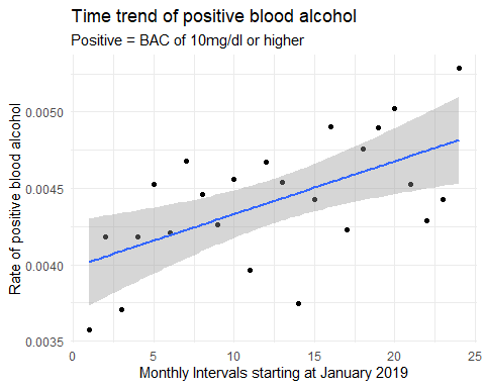
If the threshold of alcohol positivity is moved from 10 mg/dl to 80 mg/dl, a similar trend holds, with a pre-pandemic positivity rate of 0.8 per thousand, and a pandemic rate of 1.04, also statistically significant (p = 0.0008).
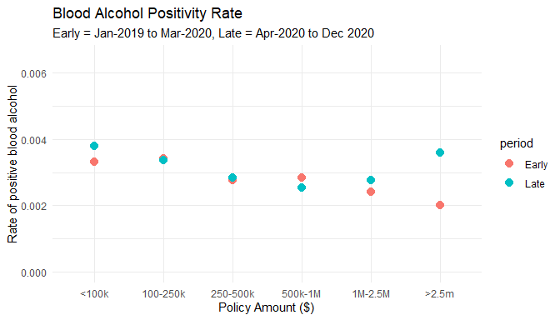
Figure 2
One interesting aspect of this observed difference by period is that the uptick occurred primarily among smokers. Figure 3 shows the rates of positive blood alcohol by period and face amount among the 91,668 tobacco users in the data. Note that these rates are up to 5 times the comparable rates in non-smokers.
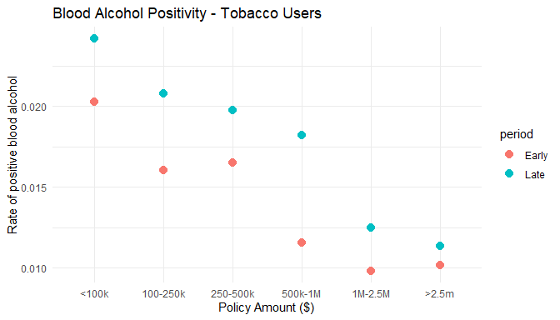
Fugure 3
Tobacco
The percentage of tobacco users varies widely across the companies in this study, from around 6% to over 16%. During the study, the percentage of individuals from each company changed significantly. Therefore, observed changes in tobacco usage may be due to the change in the mix of insurer populations. Rather than compare raw rates, an average of company rates was utilized. Note that this was not the case for alcohol; the rate of positive blood alcohol was very similar across companies.
As shown in Figure 4, there was a very modest decrease in the percentage of tobacco usage over time. In the pre-pandemic period the inter-company average was 10.1%, which decreased to 9.5% in the pandemic period.
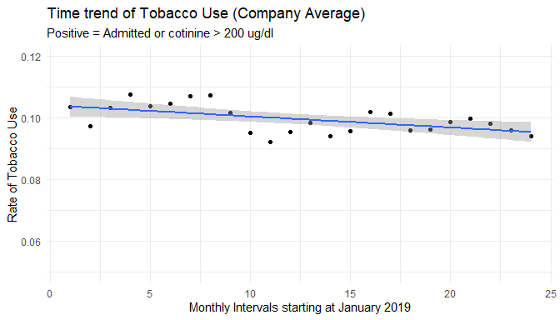
Figure 4
Key Takeaways
This study demonstrates some interesting trends over the measured time period of the COVID-19 pandemic. Most notably, rates of blood alcohol positivity are up, especially among smokers and those applying for large dollar amounts of life insurance. Tobacco usage rates are down substantially, across the board.
One might speculate that alcohol usage is up because of elevated social stressors and isolation. Peer review literature has corroborated the increase (see Pollard et al. JAMA 2020 ). Sales data also seem to support this point (see CNN report).
The tobacco usage trend is also interesting, and one might speculate that the high cost is more difficult to manage than usual during pandemic. Also, since COVID-19 is a respiratory virus, it may be that smokers are being “scared straight.” The observed trend, though, stands in contrast to tobacco industry trends (see Reuters) which show increases during the pandemic. They speculate that increased time at home provides more opportunity to smoke. Thus, it could be that those who do smoke are smoking more, even if fewer people are smoking.
About the Author
Dr. Steven J. Rigatti is a consulting medical director with Clinical Reference Laboratory, with 12 years’ experience in the life insurance industry. He is the current chair of the Mortality Committee of the American Academy of Life Insurance Medicine.


